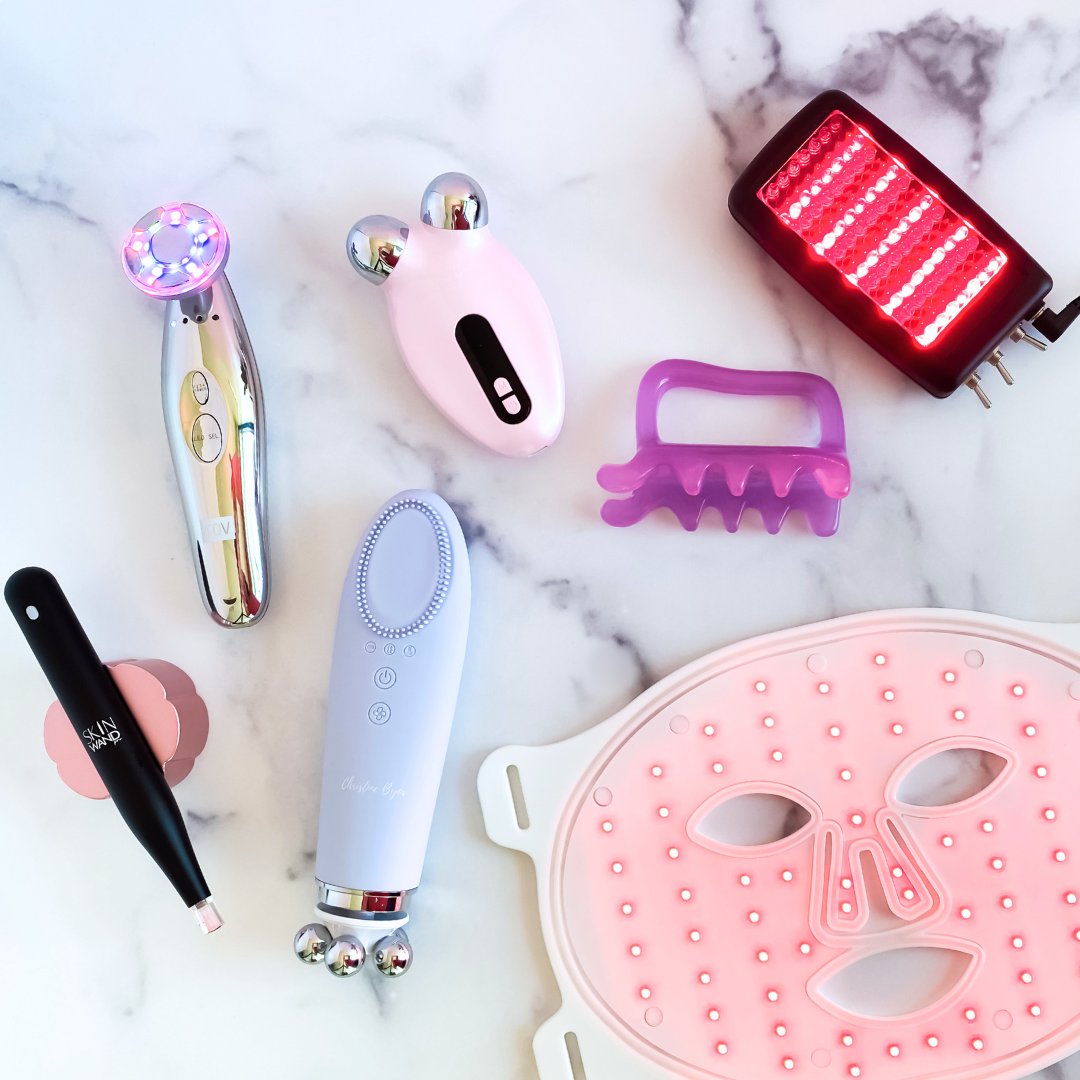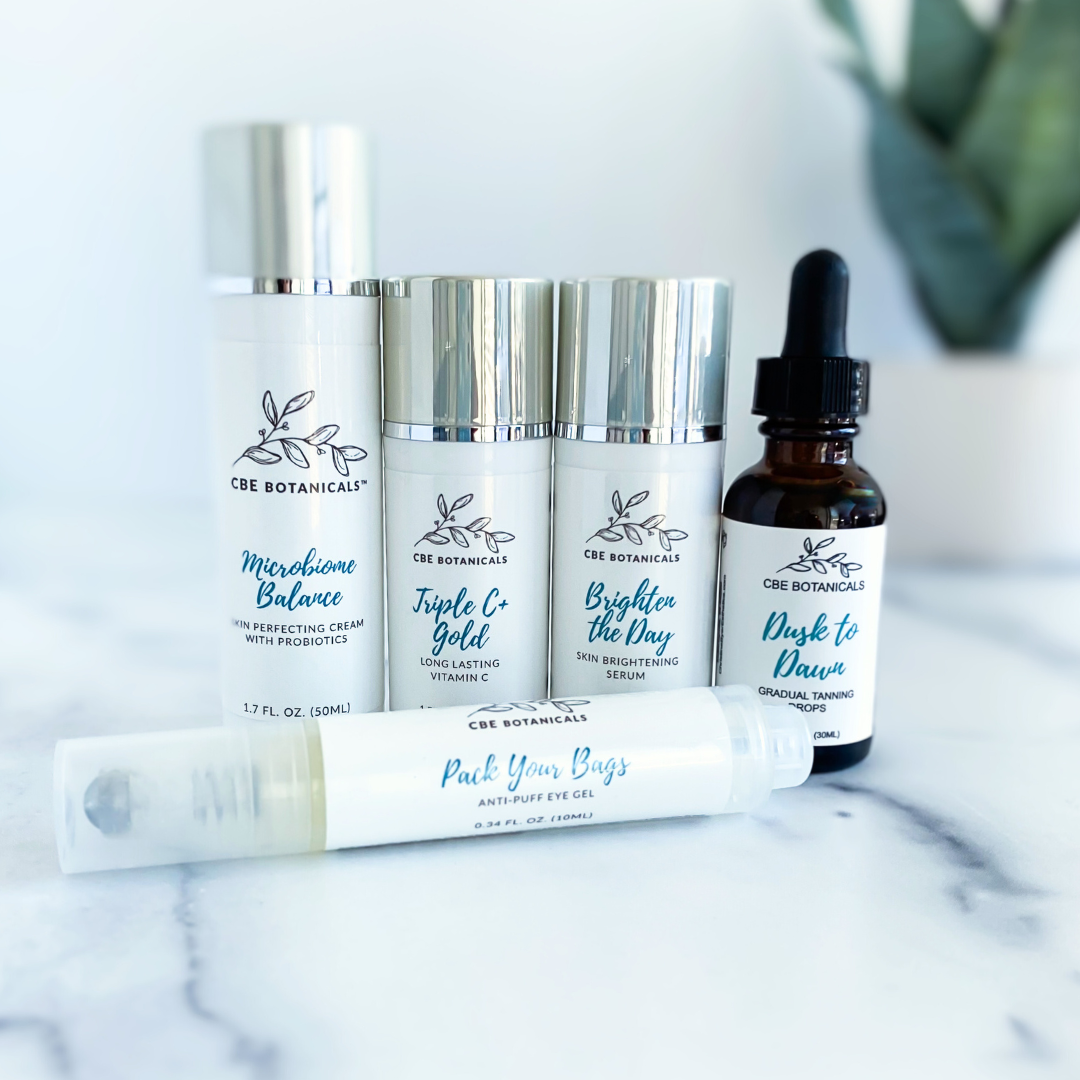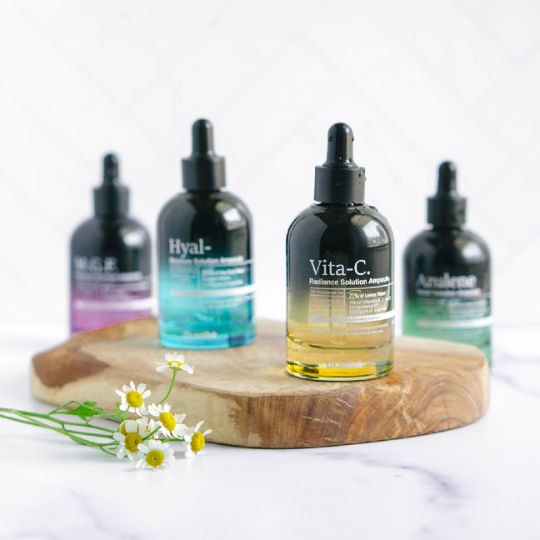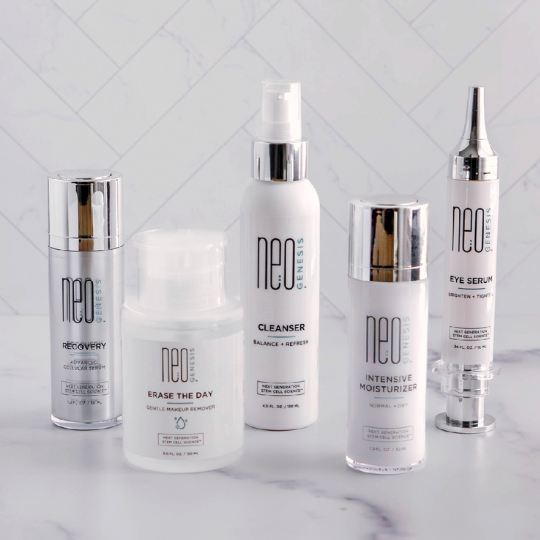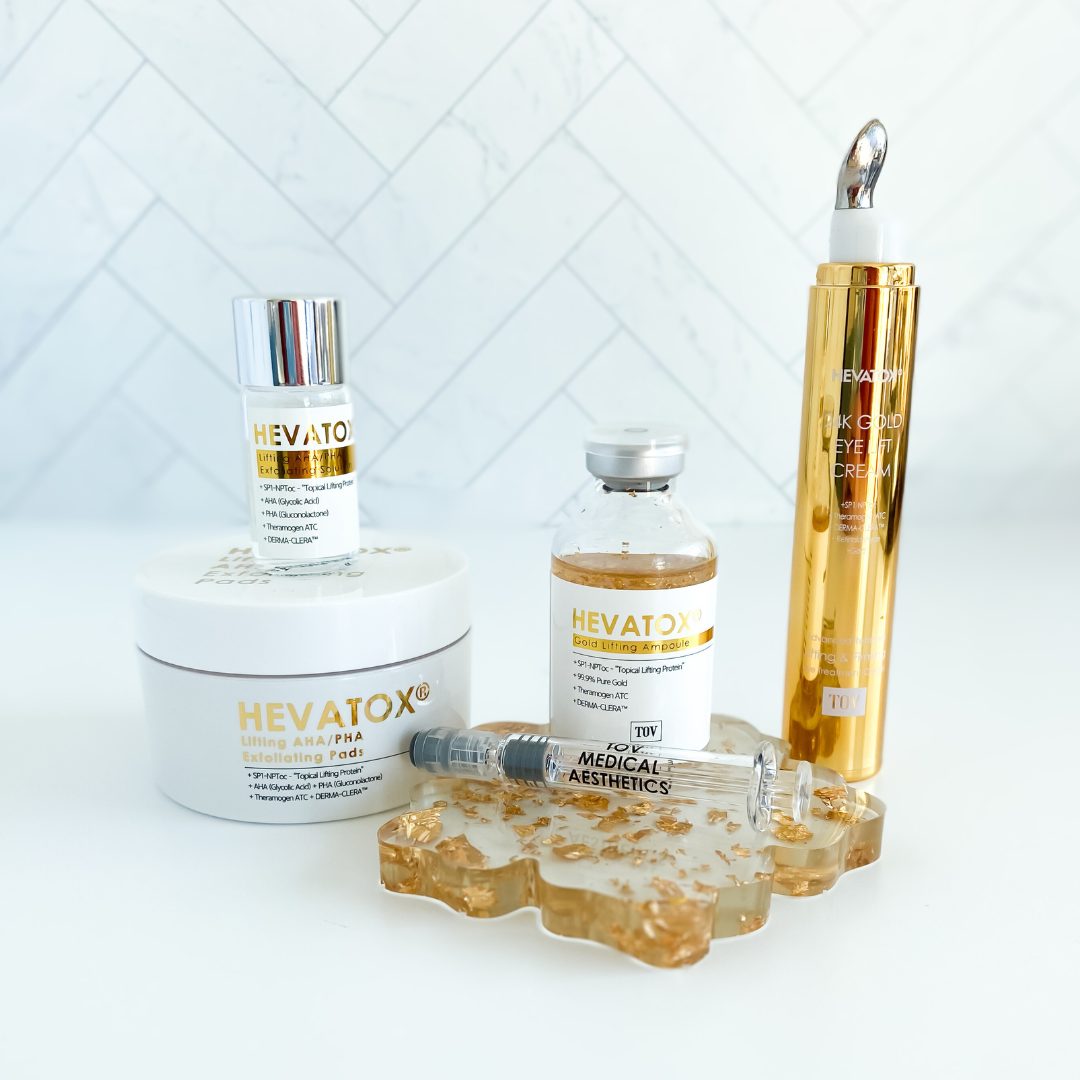Understand What You're Up Against
Spots on the skin (in the context of this article) are flat brown spots. When skin produces too much melanin (pigment), dark spots can form causing pigmentation issues. The cause can be from sun exposure causing pigmented skin cells called melanocytes to multiply in the skin or other conditions that present as hyperpigmentation.
Typical hyperpigmentation disorders include post inflammatory hyperpigmentation, melasma, solar lentigines, ephelides (freckles), and café au lait macules (CALM). These conditions are generally harmless but can contribute to uneven skin tone and dark spots that may not be flattering.
Melasma is differentiated from other forms of hyperpigmentation mainly by its cause; rather than just being sun-related, melasma is caused in part by hormonal changes within the body. Namely, estrogen and progesterone, stimulate the overproduction of melanin resulting in dark spots diagnosed as melasma.
Solar lentigines tend to become more numerous with repeated sun exposure and with advancing age. Sometimes they develop in large numbers
Ephelides (freckles) are largely genetically determined but induced by sunlight, whereas lentigines are induced by sun exposure and photodamage of the skin.
Cafe-au-lait macules (CALMs) are common pigmented lesions found in the general population. They can be described as well-circumscribed, pigmented macules or patches ranging from light to dark brown. Their size may range from a few millimeters to several centimeters (>20cm) and may appear at birth or early life.
The good news is, all forms of hyperpigmentation can be improved with treatment. You have choices in the approach you use, ranging from aggressive to mild options.
Aggressive Options
Aggressive options range from strong acid peels, laser, intense pulsed light (IPL), freezing (cryotherapy), and fibroblast. These choices are costly and will have inherent risks. Careful research should be done when choosing a provider. Make sure the professional offering these services is licensed. Don't just ask for references, call the references to find out about their experience from beginning to end of the procedure and services. Ask questions about after care, down-time, and if they'd do it again.
At-Home Technology Options
Thanks to modern technology, you have technological options you can do at home. Choices range from LED light, Microdermabrasion, and Ultrasound.
LED works best when it can be applied directly to the skin without light escaping during use. That's why I like my TriLight LED. The wavelengths of red and near infrared light improve hyperpigmentation. The wavelengths in the near infrared spectrum of 830 nm and 850 nm can inhibit the production of tyrosinase which leads to decreased melanin synthesis. LED is not a fast process so plan on using it regularly and track your progress with pictures to stay motivated.
Microdermabrasion is done with a high quality device that uses a diamond tip which will have a certain "grit" to it. Using a Microdermabrasion device gently resurfaces the skin by removing the outer most layer of skin cells. Following this kind of treatment, you may see mild redness but it will go away in a day or so. I highly recommend following this treatment with NeoGenesis Recovery for optimal healing.
Ultrasound is technology that works by penetrating deep into the skin to promote a cascading effect of the surrounding skin tissues all the way down to a cellular level. As you pass the treated area, and throughout this process, oxygen to the cells increases and removes wastes in the pores for healthier skin. My favorite device for this is the Time Master Pro with Ultrasound and LED.
Serum & Cream Options
There is a long list of ingredients that help brighten and lighten the skin. A few of my faves are Vitamin C, Niacinamide, Glutathione, Mandelic Acid, Retinol, Arbutin, Azelaic Acid, Glycolic Acid, Bearberry Extract (Uva Ursi Extract), Licorice Extract and Daisy Leaf Extract and there are more!
Using serums and creams requires a commitment to applying twice daily (AM/PM) and for at least 4 weeks to start seeing results. Nothing is instant. It takes time. Most skin brightening serums or creams work either by reducing or suppressing melanin production.
My favorite skin brightening products are: Brighten the Day, Triple C + Gold, Sleep On It Vegan Retinol (PM use) and Dr. Esthe Whitening A Serum.
Options I Do NOT Recommend
You may have heard of hydroquinone as a skin brightener. Many years ago it was a popular option but it has not proven to be effective long term. The FDA regulates the use of hydroquinone.
I do not recommend hydroquinone because it can lead to unwanted side effects and with prolonged use causes premature aging and can lead to skin cancer. Plus, it is not permanent. Oftentimes after sun exposure, spots can come back vigorously. This is outdated protocol and no longer necessary with so many safe options available.
I do not recommend steroids in skin brightening products which can lead to skin infections, and problems related to absorption by the body.
I do not recommend skin bleaching agents because they can cause skin irritation and allergic reaction. Again, much safer options are available.
Bottom Line
The truth about sunspots is, you have options, and they CAN be treated safely! Choose your option based on what you are willing to pay and risk, and willingness to stick to a routine to achieve desired results.
There is no one size fits all treatment. If you choose a serum and creams option, you must experiment to find which ingredients YOUR skin responds to the best.
Don't give up too soon! Expect to stay the course for at least 30 days. Take a weekly progress pictures and compare with a new picture each week to see the subtle changes and gauge your progress. Brighten and lighen those sunspots with consistent care!
==================
Want to get support with your skincare journey? Join us at the Christine Byer Beauty Club. We offer a 14-Day FREE Preview with full access to everything in the Club. Ask Christine questions and have access to savings and the opportunity to win a FREE consultation. If you don’t find value in your membership, cancel within the 14 days at no charge.


